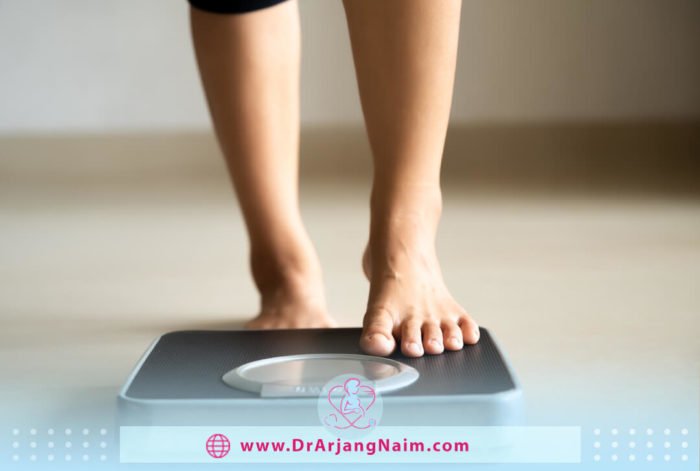Breastfeeding is when a mother breastfeeds her baby, usually directly from her breast, which is also called nursing. Breast milk is the best food for the baby, but the benefits of breastfeeding are not just for the babies but for the mothers themselves. Breast milk provides optimal nutrition for babies. It has a good amount of nutrients, is easily digested, and is easily available.
What is the process of lactation?
During pregnancy, the body’s readiness for breastfeeding can be determined through the two signs of burning and tenderness of the nipple and enlargement of the breasts. Blood flow to the breasts also increases during pregnancy, and more milk-producing cells begin to function. However, the amount of breast enlargement during pregnancy does not indicate the amount of milk produced.
The American Academy of Pediatrics (AAP) recommends exclusive breastfeeding for six months, and even after the introduction of solid foods, until at least one year of age or until the mother and baby agree to leave. The World Health Organization (WHO) recommends breastfeeding for two years or more. These agencies recommend that mothers start one hour after birth to get the most benefits.
Newborns often want to breastfeed every 2-3 hours. At two months, feeding is common every 3 to 4 hours, and at six months, most babies breastfeed every 4 to 5 hours.
Benefits for baby
It reassures parents that the baby is growing and developing properly. It also affects the baby in terms of mental development and increasing IQ. Therefore, breastfed babies are healthier.
Provides ideal nutrition for babies
Most health care professionals recommend exclusive breastfeeding for at least six months or more. Breast milk contains all the nutrients that a baby needs in the first six months of life in fair proportions. Its composition varies even according to the baby’s changing needs, especially in the first month of life.
The mother’s breasts produce thick, yellow liquid called colostrum in the first days after birth. Colostrum is rich in protein, low in sugar, and rich in useful compounds. Colostrum is the ideal first milk and helps the baby’s immature digestive system grow. After the first few days, as the baby’s stomach grows, the breasts begin to produce more milk. The only thing that may be low in milk is vitamin D.
Breast milk contains important antibodies
Breast milk is full of antibodies that help the baby fight viruses and bacteria, which are very important during the sensitive and early months. Colostrum provides high levels of immunoglobulin A (IgA) as well as several other antibodies. IgA protects the baby from getting sick by forming a protective layer in the baby’s nose, throat, and digestive system. Infants who are not breastfed are more vulnerable to health issues such as pneumonia, diarrhea, and infection.
Reducing diseases risk
It reduces the risk of many diseases in the baby, including:
- Middle ear infections: It protects against middle ear, throat, and sinus infections.
- Respiratory tract infections: Breastfeeding can protect against many acute respiratory and gastrointestinal diseases
- Intestinal tissue damage: Breastfeeding premature infants are associated with a reduced incidence of necrotizing enterocolitis.
- Colds and infections: Infants who are exclusively breastfed for six months may be less at risk for severe colds and ear or throat infections. It is associated with a reduction in intestinal infections.
- Sudden infant death syndrome (SIDS): It is associated with a reduced risk of SIDS, especially when exclusively breastfed.
- Bowel diseases: Breastfed infants are less likely to develop Crohn’s disease and ulcerative colitis.
- Allergic diseases: It is associated with a reduced risk of asthma, atopic dermatitis, and eczema.
- Diabetes: Breastfeeding is associated with a reduced risk of type 1 diabetes and non-insulin-dependent diabetes.
- Childhood leukemia: Breastfeeding is associated with a reduced risk of childhood leukemia.
Makes children smarter
There is a difference in brain development between breastfed and formula-fed infants. This difference may be due to the physical intimacy, touch and eye contact associated with breastfeeding, and the nutrient content. Breastfed infants have higher IQ scores and are less likely to have behavioral learning problems as they age. However, the most noticeable effects are seen in premature infants who are at higher risk for developmental problems.
Promotes baby’s healthy weight
Breastfeeding promotes healthy weight gain and prevents childhood obesity. Breastfeeding for more than four months significantly reduces a baby’s chances of becoming overweight and obese. This may be due to the growth of various intestinal bacteria. Breastfed infants have higher levels of beneficial gut bacteria that may affect fat storage. Infants who are breastfed have more leptin than formula-fed infants. Leptin is a key hormone for regulating appetite and storing fat.
Benefits for mother

Breastfeeding also has many known and unknown benefits for mothers.
Help lose weight
While some women seem to gain weight while breastfeeding, others seem to lose weight effortlessly. It burns more calories, and after three months of breastfeeding, they are more likely to experience an increase in fat burning than non-breastfeeding mothers.
It helps the uterus contract
During pregnancy, the uterus grows rapidly, becoming the size of a pear, and fills almost the entire abdominal space. After delivery, the uterus undergoes a process called involution, which helps it return to its original size. Oxytocin, a hormone that increases during pregnancy, helps advance this process.
The body secretes large amounts of oxytocin during labor to help deliver the baby and reduce bleeding. Oxytocin also increases during lactation. Encourages uterine contractions, reduces bleeding and helps the uterus return to its previous size.
Reduces disease risk
It is beneficial for long-term protection against cancer and several other diseases. Breastfeeding women are at lower risk for:
- Breast cancer
- Ovarian cancer
- High blood pressure
- Arthritis
- High blood fats
- Heart disease
- Type 2 diabetes
Lower risk for depression
Postpartum depression is a type of depression that can occur shortly after birth. Mothers who breastfeed their babies are less likely to develop postpartum depression than non-breastfeeding mothers.
Prevent menstruation
Continuing to breastfeed will also stop ovulation and menstruation. Suspending menstrual cycles may be a natural way to ensure the time interval between pregnancies.
It saves time and money
If a mother breastfeeds her baby, it saves time and money.
Signs baby is hungry

One of the most common ways a baby will let the mother know he or she are hungry is by crying. Other symptoms include:
- Licking their lips or sticking out their tongue
- Rooting, which is moving their jaw, mouth, or head to look for breast
- Putting their hand in their mouth
- Opening their mouth
- Fussiness
- Sucking on things
Is the amount of breast milk enough?
The mother’s breasts produce an ideal “first milk” called colostrum for the first few days after birth. Colostrum is the first stage of breast milk that changes overtime to give the baby the nutrition it needs as it grows. The second phase is called transitional milk, the stage between colostrum and the third phase of milk. The third phase is called mature milk.
A few days after birth, the mother’s breasts will begin to produce transitional milk. In 10 to 15 days after birth, mature milk is produced that provides all the nutrients the baby needs. Most babies lose a small amount of weight in the first 3 to 5 days after birth. Because the baby needs more milk and drinks more milk, breasts respond more to milk production. Experts recommend that the baby be exclusively breastfed for the first six months. If formula milk is used, the breasts will produce less milk.
Solid food can be added at six months, but if the mother still wants to be able to breastfeed, she must continue breastfeeding. If the baby is getting enough breast milk, they should:
- Not lose more than 7% of their birth weight in the first few days after delivery.
- Seem content for about 1-3 hours between feedings
- Have at least six diapers a day wet with very pale or clear pee by the time they are 7-10 days old
Best Position

The best position is one in which both mother and baby are comfortable and relaxed. Some common position includes:
- Cradle position: In this position, the mother should keep the baby’s head bent at the elbow. It is better to sit on a bed with a place to lean and stretch legs or sit on a chair with comfortable handles and put feet on a stool or footrest. Lay the baby on its feet or on a breastfeeding pillow, with the baby on its side and face, abdomen and knees facing the mother.
- Football position: In this position, the baby’s back should be placed along the mother’s forearm so that the head and neck are held in the mother’s palm. This is the best position for newborns and small babies. It is also a good situation if the mother is recovering from a cesarean section.
- This position is great for bedtime feeding. If the mother is recovering from an episiotomy, lying on her side helps to improve the condition. For comfort, the mother can use a pillow under her head. Use free hand to lift the breast and nipple into the baby’s mouth.
- Cross-cradle holds: The mother sits in a comfortable chair. Pull baby in front of the body so that it touches the mother’s abdomen. Hold the baby’s body with the mother’s hands and place it in front of the breast that wants to breastfeed. Use the right hand for the left breast and the left hand for the right breast. Hold the baby with one hand of the mother, and with the other hand, hold the breast in a U-shape from below. Gently guide the baby’s mouth toward the breast. Do not bend or move forward in this position.
- Laid-back position: This situation is also called biological nurturing. This means using natural breastfeeding instincts for mother and baby. In this case, the mother leans back on the couch or bed, but not completely flat. Have good support for head and shoulders. Hold the baby so that the whole front of the mother’s body is in contact with the baby. Allow the baby to take any position that is comfortable as long as the baby’s cheek is close to the breast. Help the child if needed.
10 Best breastfeeding tips for new mothers
Every woman who becomes a mother must have many questions in mind at the beginning of the process of breastfeeding her baby. Some points reduce their anxiety.
- Anticipate baby’s desires: Instead of waiting for the baby to cry, mother can anticipate their needs by looking at a few specific signs. When a child is hungry, it is possible to:
- Rotate or raise your head frequently
- Open and close their mouths
- Take out their tongues
- Suck as close as possible
- Let baby determine how often and how long to nurse
- Get comfortable while nursing
- Help baby finds the right position
- Leaking is natural
- Don’t worry; you’ll have enough milk
- Stay hydrated
- Breastfeed right after birth
- Consider different ways to latch
- Breastfeed from both breasts equally
The bottom line
After the baby is born, women start breastfeeding. It is a period that is as important as pregnancy, and it is highly recommended to be aware of some points and pay attention to them. The benefits of breastfeeding are so great that most health agencies recommend it to everyone as long as possible. Breast milk is ideal baby food and contains a combination of vitamins, proteins, and fats and contains all the ingredients needed for Your baby’s growth. It is also easy to digest. Breast milk contains antibodies that help the baby fight viruses and bacteria.
Breastfeeding a baby has many benefits for the baby and has many benefits for the mother. It helps to lose weight. Releases the hormone oxytocin, which in turn returns to the uterus as much as before pregnancy and reduces uterine bleeding after birth. It also helps reduce the risk of breast cancer, ovarian cancer, and osteoporosis. It is best to start breastfeeding immediately after birth. This can guarantee successful breastfeeding in the future.
Additional questions
1. Can a woman produce milk without being pregnant?
Breastfeeding is common in a woman and can sometimes occur during pregnancy. However, for both women and men, milk secretions from one or both nipples may occur without pregnancy or breastfeeding. This form of lactation is called galactorrhea.
2. Are there medical considerations with breastfeeding?
In rare cases, breastfeeding can harm the baby, including:
- The mother is HIV positive
- The mother has active and untreated tuberculosis
- The mother is receiving chemotherapy for cancer
- The mother uses an illegal drug such as cocaine or marijuana
- The baby has a rare condition called galactosemia and cannot tolerate the natural sugar called galactose in breast milk
- The mother is taking certain prescription medications, such as some medications for migraine headaches, Parkinson’s disease, or arthritis.
3. What are some common challenges with breastfeeding?
Breastfeeding can have many challenges, including:
- Sore nipples
- Dry, cracked nipples
- Worries about producing enough milk
- Pumping and storing milk
- Inverted nipples
- Breast engorgement
- Breast infection
4. Can breastfeed after breast surgery?
Yes, but the amount of milk the breast produces depends on how the surgery is performed, the incision site and the reasons for the surgery. Women who have incisions in the crease under the breast are less likely to produce milk than women who have incisions around or around or across areola. Women who have had a breast prosthesis are usually able to breastfeed.
5. How long should breastfeed baby?
The American Academy of Pediatrics (AAP) recommends breastfeeding as the only source of food in the first 6 months of a baby’s life. The AAP also recommends that mother continue breastfeeding after the baby is born and for as long as both mother and baby want.
References:
https://www.mustelausa.com/blogs/mustela-mag/the-12-best-breastfeeding-tips-for-new-mothers
https://www.pampers.com/en-us/baby/feeding/article/breastfeeding-tips
https://my.clevelandclinic.org/health/articles/15274-the-benefits-of-breastfeeding-for-baby–for-mom
https://www.healthline.com/health/breastfeeding/11-benefits-of-breastfeeding
https://www.webmd.com/parenting/baby/nursing-basics#1




